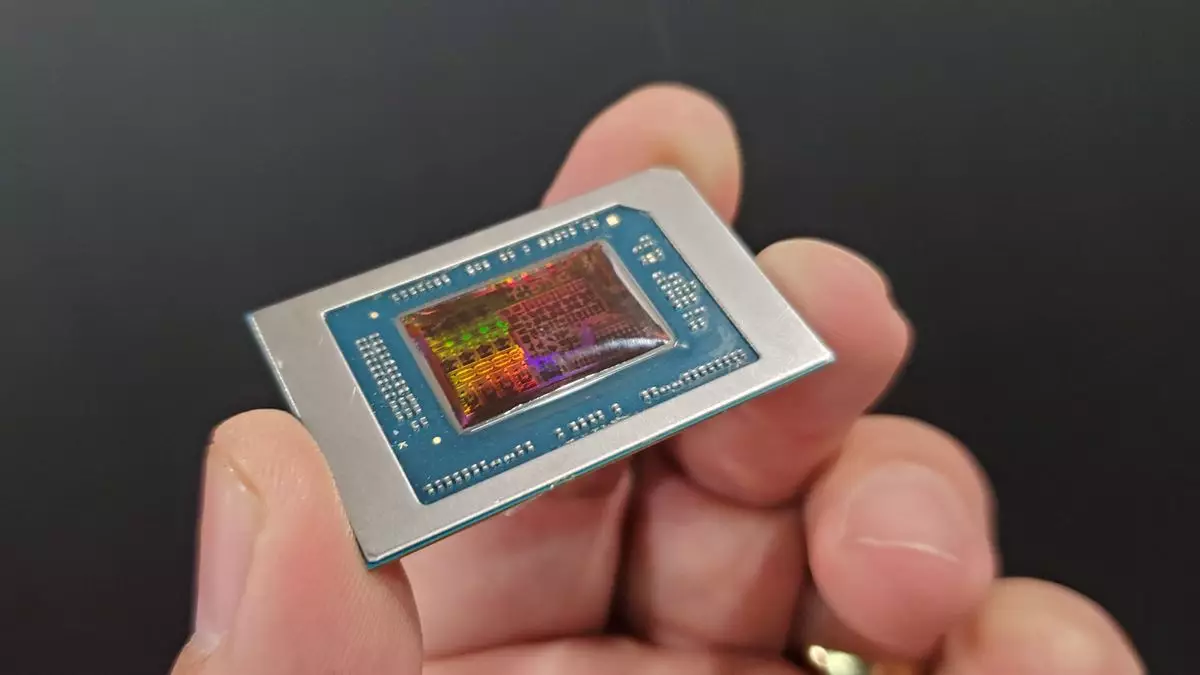In the rapidly evolving landscape of computing, AMD’s Strix Point APU stands out as a particularly impressive advancement tailored for laptops and handheld PCs, exemplified by cutting-edge models like the Razer Blade 16 and OneXPlayer OneXFly F1 Pro. But beyond its portable applications, this innovative chip has planted the seeds of excitement for its potential desktop debut in the form of the “Ryzen 9000G” in Q4 2025. While many tech enthusiasts speculate on the specific branding, possibly incorporating an “AI” designation—think Ryzen AI 9000G—the core technology remains the same, amplifying the promise of what Strix Point could bring to the desktop.
Unlocking Powerful Technology
Strix Point is no ordinary APU; it boasts an impressive configuration of up to 12 cores derived from AMD’s newly minted Zen 5 architecture. The architecture splits into four full-sized Zen 5 cores and eight compact Zen 5c cores, offering a versatile and efficient performance profile. Coupled with the 16 RDNA 3.5 graphics compute units, Strix Point paints a picture of competent gaming and multimedia prowess. Additionally, it hosts a neural processing unit (NPU) rated at 55 TOPS, elevating its capabilities in applications requiring hefty AI computations.
In a world where multitasking and high-efficiency computing reign supreme, these specifications promise a robust entry point into the realm of compact yet powerful computing solutions.
A Suitable Home: The Potential for Mini PCs
While AMD has designed Strix Point with portability in mind, the warming speculation surrounding its desktop integration suggests several intriguing applications, specifically in mini PCs. The concept presents a compelling proposition for users seeking a capably performing machine without the unnecessary bulk often associated with high-performance desktops.
The upcoming Ayaneo Retro Mini PC AM01S serves as an ideal showcase for Strix Point’s capabilities, albeit in a mobile format branded as AMD Ryzen AI 9 HX 370. This platform underscores AMD’s intent to maintain a competitive edge using its latest technology in a cost-effective manner. By optimizing this chip for the mini PC market, AMD could provide consumers with a fantastic entry-level option that prioritizes both power and size.
The Question of Performance in Perspective
Of course, the dialogue around Strix Point cannot ignore the differentiation from dedicated CPU and GPU combinations. For users who yearn for top-notch gaming and unparalleled performance, a traditional CPU and discrete GPU setup will undeniably remain the gold standard. Yet, the appeal of Strix Point is in its balanced performance tailored for a broad spectrum of everyday tasks, gaming, and creative work within a compact framework.
Furthermore, Strix Point’s performance levels could theoretically surpass its mobile variants when adapted for desktop applications, allowing it to cater to users who might prefer gaming at lower settings or for non-demanding workloads. Therefore, even though it may not spearhead the gaming lifestyle, Strix Point positions itself as a competent all-rounder in the mini PC domain.
Looking Ahead: Future Prospects
As AMD prepares for the anticipated launch, speculation remains rampant concerning pricing and specifications. While it is too early to determine concrete figures or framework details, the general direction hints at a strategic move to engage the burgeoning mini PC segment—an enthusiastic marketplace willing to embrace compact technology that doesn’t compromise on performance.
This forward-thinking approach not only underscores AMD’s commitment to innovation but also highlights the evolving needs of consumers who increasingly seek multifunctional computing experiences without the traditional constraints of size and power. The Strix Point APU could very well serve as a beacon of AMD’s future endeavors, catalyzing a new trend towards efficiency without sacrificing capability.
Though the road to 2025 may seem far off, the future of mini PCs with AMD’s Strix Point looks decidedly bright, offering hope for enthusiasts and casual users alike who are in pursuit of the next generation of computing technology.

